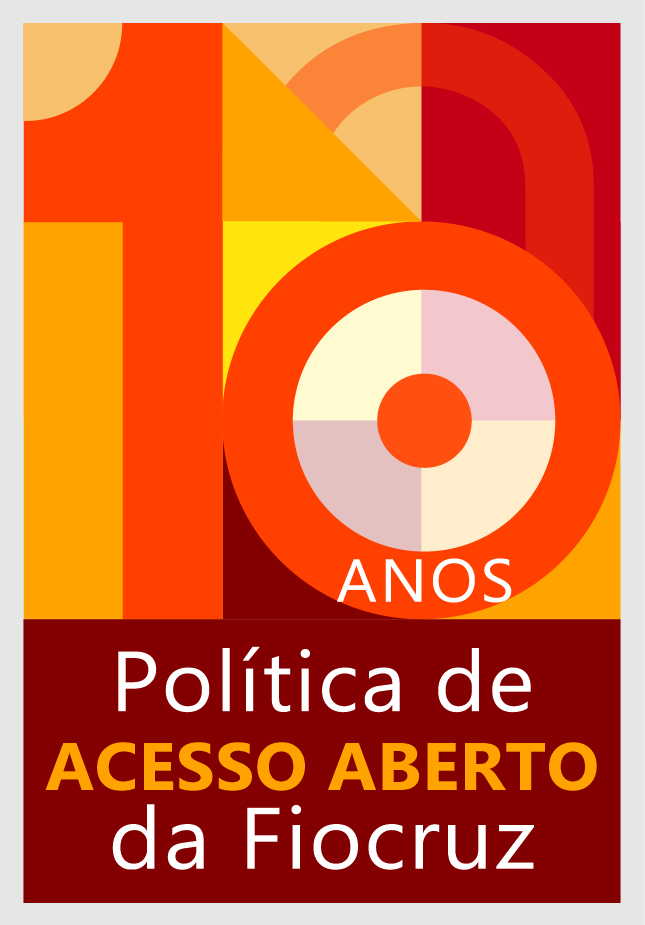Perspective of healthcare professionals on the use of telehealth in the context of the covid-19 pandemic
DOI:
https://doi.org/10.29397/reciis.v17i1.3261Keywords:
Telemedicine, Telemonitoring, Telehealth, Rehabilitation centers, eHealth PoliciesAbstract
The objective of this study was to analyze the use and impacts of telehealth in a Specialized Rehabilitation Center (SRC), from the perspective of health professionals, during the covid-19 pandemic. This is an analytical cross-sectional study carried out with health professionals from a SRC. A questionnaire developed by the researchers was used on the sociodemographic profile and perception of the professional in relation to the consultations performed at a distance. Data were analyzed using the SPSS statistical package (26.0). A significance level of 5% (p < 0.05) was adopted. Sample composed of 79 professionals, most of them graduated for more than ten years, with no experience with telehealth. There was a significant relationship between the number of tools used and the degree of difficulty, and the presence of training, with self-satisfaction with the service. The choice of tool is intrinsically linked to availability, skill and task to be performed. Previous training demonstrated a reduction in barriers and job satisfaction.
References
ABD-ALRAZAQ, Alaa et al. Overview of technologies implemented during the first wave of the covid-19 pandemic: scoping review. Journal of Medical Internet Research, Toronto, v. 23, n. 9, p. e29136, set. 2021. DOI: https://dx.doi.org/10.2196/29136. Disponível em: https://www.ncbi.nlm.nih.gov/pmc/articles/PMC8767979/. Acesso em: 5 nov. 2021.
AQUINO, Estela Maria Motta Leão et al. Medidas de distanciamento social no controle da pandemia de covid-19: potenciais impactos e desafios no Brasil. Ciência & Saúde Coletiva, Rio de Janeiro, v. 25, n. 1, p. 2423-2446, jun. 2020. DOI: https://doi.org/10.1590/1413-81232020256.1.10502020. Disponível em: https://www.scielo.br/j/csc/a/4BHTCFF4bDqq4qT7WtPhvYr/?lang=pt#. Acesso em: 24 nov. 2021.
ATINGA, Roger A. et al. E-health usage and health workers’ motivation and job satisfaction in Ghana. PloS One, São Paulo, v. 15, n. 9, p. 1-10, set. 2020. DOI: https://dx.doi.org/10.1371/journal.pone.0239454. Disponível em: https://journals.plos.org/plosone/article?id=10.1371/journal.pone.0239454. Acesso em: 15 jul. 2021.
BARBOSA, Ingrid de Almeida; SILVA, Maria Júlia Paes da. Nursing care by telehealth: what is the influence of distance on communication? Revista Brasileira de Enfermagem, Brasília, DF, v. 70, n. 5, p. 978-984, 2017. DOI: https://doi.org/10.1590/0034-7167-2016-0142. Disponível em: https://www.scielo.br/j/reben/a/RVP63D6Rr9BjBwJPxkVm9qg/?lang=en. Acesso em: 15 jul. 2021.
BRASIL. Ministério da Saúde. Lei n. 13.989, de 15 de abril de 2020. Dispõe sobre o uso da telemedicina durante a crise causada pelo coronavírus (SARS-CoV-2). Diário Oficial da União, Brasília, DF, n. 73, p. 1, 16 abr. 2020a. Seção I. Disponível em: https://www.in.gov.br/en/web/dou/-/lei-n-13.989-de-15-de-abril-de-2020-252726328#:~:text=Art.,emergencial%2C%20o%20uso%20da%20telemedicina. Acesso em: 10 jul. 2020.
BRASIL. Ministério da Saúde. Portaria n. 467, de 20 de março de 2020. Dispõe, em caráter excepcional e temporário, sobre as ações de Telemedicina, com o objetivo de regulamentar e operacionalizar as medidas de enfrentamento da emergência de saúde pública de importância internacional previstas no art. 3º da Lei nº 13.979, de 6 de fevereiro de 2020, decorrente da epidemia de covid-19. Diário Oficial da União, Brasília, DF, n. 56-b, p. 1, 23 mar. 2020b. Seção I. Disponível em: https://www.in.gov.br/en/web/dou/-/portaria-n-467-de-20-de-marco-de-2020-249312996. Acesso em: 10 jul. 2020.
BRASIL. Ministério da Saúde. Secretaria de Ciência, Tecnologia e Insumos Estratégicos em Saúde. Guia metodológico para programas e serviços em telessaúde. Brasília, DF: Ministério da Saúde, 2019. Disponível em: https://bvsms.saude.gov.br/bvs/publicacoes/guia_metodologico_programas_servicos_telessaude.pdf. Acesso em: 24 nov. 2021.
CAETANO, Rosângela et al. Desafios e oportunidades para telessaúde em tempos da pandemia pela covid-19: uma reflexão sobre os espaços e iniciativas no contexto brasileiro. Cadernos de Saúde Pública, Rio de Janeiro, v. 36, n. 5, p. 1-16, 2020. DOI: https://doi.org/10.1590/0102-311X00088920. Disponível em: https://www.scielo.br/j/csp/a/swM7NVTrnYRw98Rz3drwpJf/?lang=pt. Acesso em: 24 nov. 2021.
CONSELHO FEDERAL DE MEDICINA (CFM). Ofício CFM n. 1756/2020 – COJUR. Brasília, DF: CFM, 19 mar. 2020. Disponível em: https://portal.cfm.org.br/images/PDF/2020_oficio_telemedicina.pdf. Acesso em: 22 dez. 2022.
CONSELHO FEDERAL DE MEDICINA (CFM). Resolução CFM n. 2.227/2018. Define e disciplina a telemedicina como forma de prestação de serviços médicos mediados por tecnologias. Diário Oficial da União, Brasília, DF, p. 58, 6 fev. 2019. Seção I. Disponível em: https://portal.cfm.org.br/images/PDF/resolucao222718.pdf. Acesso em: 22 dez. 2022.
DAMASCENO, Renata Fiúza; CALDEIRA, Antônio Prates. Fatores associados à não utilização da teleconsultoria por médicos da Estratégia Saúde da Família. Ciência & Saúde Coletiva, Rio de Janeiro, v. 24, n. 8, p. 3089-3098, ago. 2019. DOI: https://doi.org/10.1590/1413-81232018248.28752017. Disponível em: https://www.scielo.br/j/csc/a/MRRvhCdyhF3FpTcg4gkP3ns/?lang=pt. Acesso em: 5 nov. 2021.
DONG, Ensheng; DU, Hongru; GARDNER, Lauren. An interactive web-based dashboard to track covid-19 in real time. The Lancet Infectious Diseases, Londres, v. 20, n. 1, p. 533-534, maio 2020. DOI: https://doi.org/10.1016/S1473-3099(20)30120-1. Disponível em: https://www.thelancet.com/journals/laninf/article/PIIS1473-3099(20)30120-1/fulltext. Acesso em: 22 set. 2021.
DORSEY, E. Ray; TOPOL, Eric J. State of Telehealth. The New England Journal of Medicine, Boston, v. 375, n. 2, p. 154-161, jul. 2016. DOI: https://doi.org/10.1056/NEJMra1601705. Disponível em: https://www.nejm.org/doi/10.1056/NEJMra1601705?url_ver=Z39.88-2003&rfr_id=ori:rid:crossref.org&rfr_dat=cr_pub%20%200pubmed. Acesso em: 28 maio 2020.
HEYER, Arianna et al. Medical oncology professionals’ perceptions of telehealth video visits. JAMA Network Open, Chicago, v. 4, n. 1, p. e2033967, jan. 2021. DOI: https://dx.doi.org/10.1001/jamanetworkopen.2020.33967. Disponível em: https://jamanetwork.com/journals/jamanetworkopen/fullarticle/2775074. Acesso em: 24 nov. 2021.
HILTY, Donald M. et al. Mobile health, smartphone/device, and apps for psychiatry and medicine: competencies, training, and faculty development issues. Psychiatric Clinics of North America, Filadélfia, v. 42, n. 3, p. 513-534, set. 2019. DOI: https://doi.org/10.1016/j.psc.2019.05.007. Disponível em: https://www.sciencedirect.com/science/article/pii/S0193953X19300486?via%3Dihub. Acesso em: 20 nov. 2021.
KEENAN, Amanda Jane; TSOURTOS, George; TIEMAN, Jennifer. The value of applying ethical principles in telehealth practices: systematic review. Journal of Medical Internet Research, Toronto, v. 23, n. 3, e25698, mar. 2021. DOI: https://dx.doi.org/10.2196/25698. Disponível em: https://pubmed.ncbi.nlm.nih.gov/33783366/. Acesso em: 5 nov. 2021.
LAW, Timothy et al. Conceptual framework to evaluate health care professionals’ satisfaction in utilizing telemedicine. The Journal of the American Osteopathic Association, Chicago, v. 119, n. 7, p. 435-445, jul. 2019. DOI: https://doi.org/10.7556/jaoa.2019.080. Disponível em: https://www.degruyter.com/document/doi/10.7556/jaoa.2019.080/html. Acesso em: 3 set. 2021.
LÓPEZ, C.; CLOSA, C.; LUCAS, E. Telemedicine in rehabilitation: post-covid need and opportunity. Rehabilitación, Madri, v. 54, n. 4, p. 225-227, out.-dez. 2020. DOI: https://dx.doi.org/10.1016/j.rh.2020.06.003. Disponível em: https://www.sciencedirect.com/science/article/pii/S0048712020300803?via%3Dihub. Acesso em: 9 jul. 2021.
NGUEYN, Mary; WALLER, Morgan; PANDYA, Aarti; PORTNOY, Jay. A review of patient and provider satisfaction with telemedicine. Currenty Allergy and Asthma Reports, Filadélfia, v. 20, p. 1-7, set. 2020. DOI: https://doi.org/10.1007/s11882-020-00969-7. Disponível em: https://link.springer.com/article/10.1007/s11882-020-00969-7. Acesso em: 10 jul. 2021.
OLIVEIRA, Jonaina Fiorim Pereira de et al. Barreiras e facilitadores na implementação da telerreabilitação em um serviço de reabilitação durante a pandemia da covid-19: relato de experiência. In: MARTINS, Ernane Rocha; SILVA, Patrício Francisco da; LEITE, Dennis Soares (org.). Tecnologias emergentes na saúde: inovações e tendências na gestão dos cuidados em saúde. São Paulo: Editora Científica, 2021. p. 43-54.
SACHETT, Jacqueline de Almeida Gonçalves. Adaptation for professional health care in times of covid-19: contributions from telehealth to the “new normal”. Journal Health NPEPS, Cáceres, v. 5, n. 2, p. 11-15, jul.-dez. 2020. DOI: http://dx.doi.org/10.30681/252610104877. Disponível em: https://periodicos.unemat.br/index.php/jhnpeps/article/view/4877. Acesso em: 24 nov. 2021.
SANTOS, Alaneir de Fátima dos et al. Uma visão panorâmica das ações de telessaúde na América Latina. The Pan American Journal of Public Health, Washington, DC, v. 35, n. 5-6, p. 465-470, 2014. Disponível em: https://www.scielosp.org/pdf/rpsp/v35n5-6/25.pdf. Acesso em: 29 maio 2020.
SIMON, Gregory E. Why the nails should boss the hammers. Psychiatric Services, Washington, DC, v. 70, n. 8, p. 642-643, maio 2019. DOI: https://doi.org/10.1176/appi.ps.201900218. Disponível em: https://ps.psychiatryonline.org/doi/10.1176/appi.ps.201900218. Acesso em: 27 nov. 2021.
SORATTO, Jacks et al. Satisfacción de los profesionales de la estrategia de salud familiar en el Brasil: un estudio cualitativo. Texto & Contexto Enfermagem, Florianópolis, v. 29, n. 1, p. e20180104, 2020. DOI: https://doi.org/10.1590/1980-265X-TCE-2018-0104. Disponível em: https://www.scielo.br/j/tce/a/6ft8xKzBzx6fNJbdmDTDm5d/abstract/?lang=es. Acesso em: 15 jul. 2021.
VIRTANEN, Lotta et al. Behavior change techniques to promote healthcare professionals’ eHealth competency: a systematic review of interventions. International Journal of Medical Informatics, Shannon, v. 149, n. 104432, p. 1-20, maio 2021. DOI: https://doi.org/10.1016/j.ijmedinf.2021.104432. Disponível em: https://pubmed.ncbi.nlm.nih.gov/33684712/. Acesso em: 5 set. 2021.
WORLD HEALTH ORGANIZATION (WHO). Telemedicine: opportunities and developments in Member States: report on the second global survey on eHealth. Genebra: WHO, 2010. Disponível em: https://apps.who.int/iris/bitstream/handle/10665/44497/9789241564144_eng.pdf?sequence=1&isAllowed=y. Acesso em: 5 set. 2021.
Downloads
Published
How to Cite
Issue
Section
License
Copyright (c) 2023 Iriana Moraes Eduardo, Letícia de Araújo Morais, Paulo Fernando Lôbo Corrêa

This work is licensed under a Creative Commons Attribution-NonCommercial 4.0 International License.
Author’s rights: The author retains unrestricted rights over his work.
Rights to reuse: Reciis adopts the Creative Commons License, CC BY-NC non-commercial attribution according to the Policy on Open Access to Knowledge by Oswaldo Cruz Foundation. With this license, access, download, copy, print, share, reuse, and distribution of articles is allowed, provided that it is for non-commercial use and with source citation, granting proper authorship credits and reference to Reciis. In such cases, no permission is required from the authors or editors.
Rights of authors’s deposit / self-archiving: The authors are encouraged to deposit the published version, along with the link of their article in Reciis, in institutional repositories.












